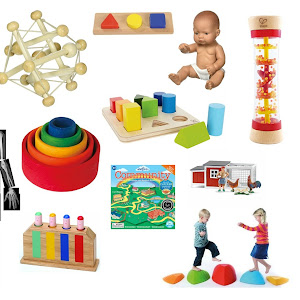As Gus is getting older, he is spending more time refining some of the skills he needs to move on to bigger work in Children's House. One thing that he has been super into lately has been pin punching work. This work is excellent for working on pincer grip and hand-eye coordination. The purpose of this work is for the child to punch little holes very close to one another and eventually punch out a shape from a piece of paper. This seems simple, but it take a great deal of control to get the punches close enough that the shape will come away from the paper easily and without ripping. For Gus, it's been a great source of concentration, and if you watch my stories on Instagram , then you know it has been very popular with him lately. To make this simple tray, you'll need: A puncher - we use this one which mimics a pencil, but I've also seen people use large push pins with success Punching surface - we use a thick piece of felt but cork or other pr...















